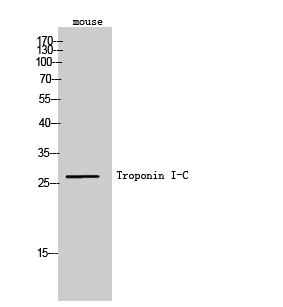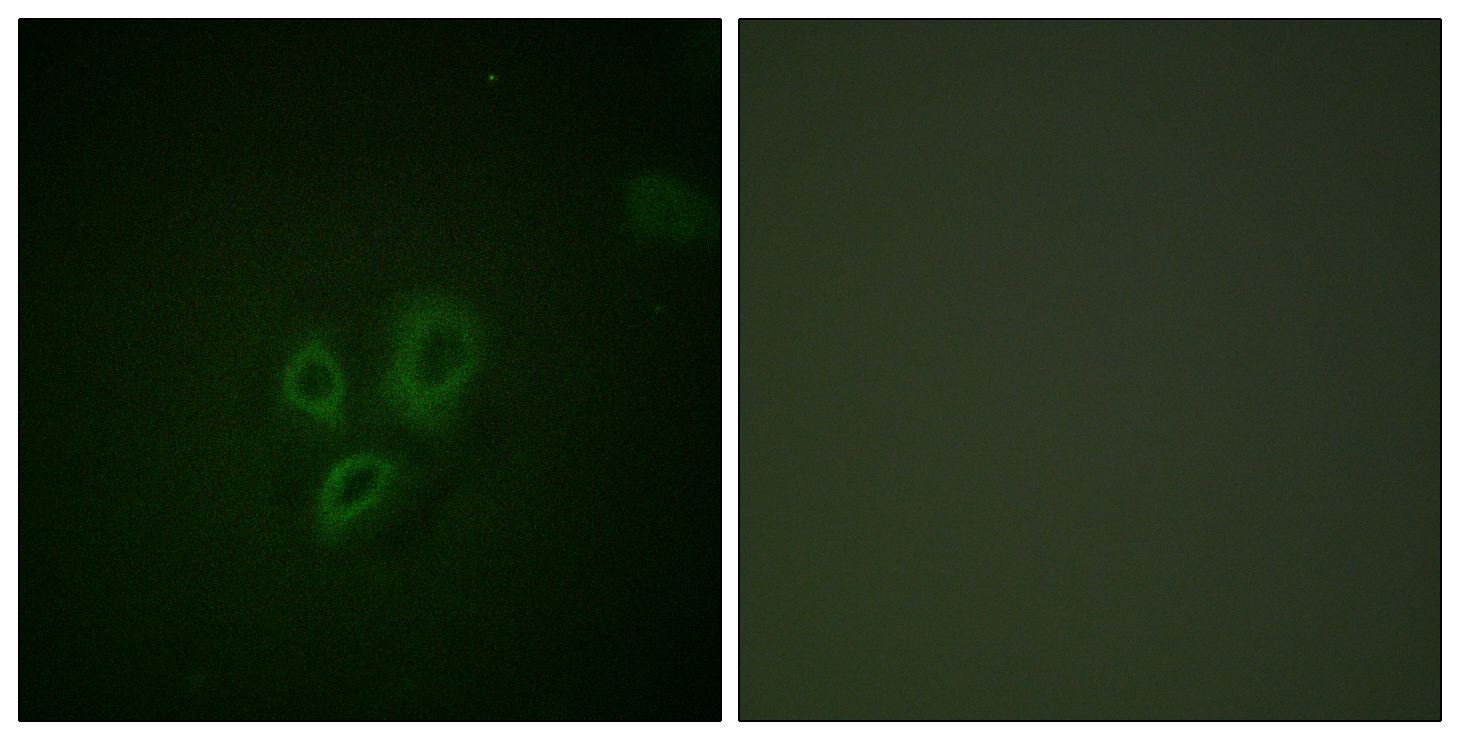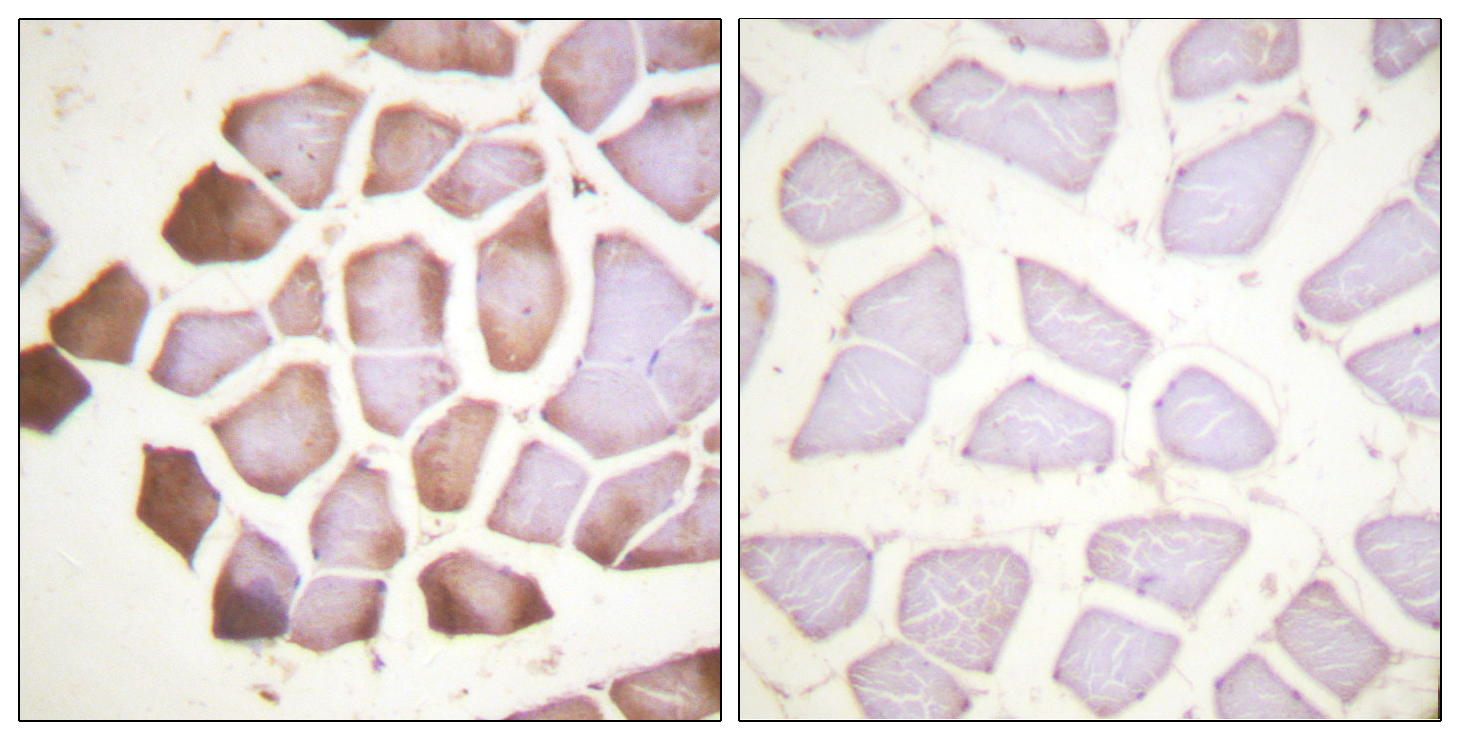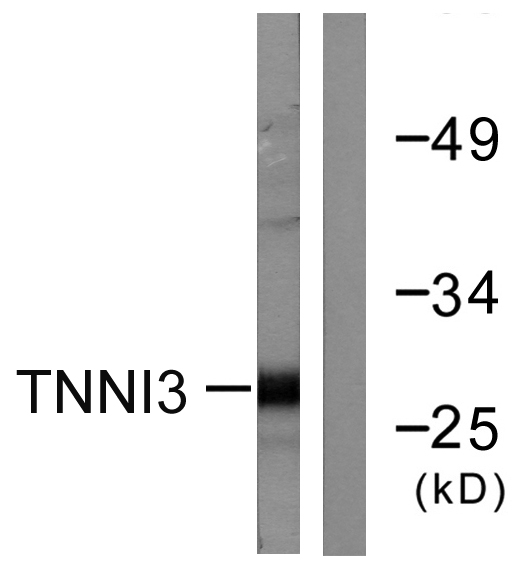Troponin I-C Polyclonal Antibody
- Catalog No.:YT4747
- Applications:WB;IHC;IF;ELISA
- Reactivity:Mouse;Rat
- Target:
- Troponin I-C
- Gene Name:
- TNNI3
- Protein Name:
- Troponin I cardiac muscle
- Human Swiss Prot No:
- P19429
- Mouse Gene Id:
- 21954
- Rat Gene Id:
- 29248
- Rat Swiss Prot No:
- P23693
- Immunogen:
- The antiserum was produced against synthesized peptide derived from mouse TNNI3. AA range:5-54
- Specificity:
- Troponin I-C Polyclonal Antibody detects endogenous levels of Troponin I-C protein.
- Formulation:
- Liquid in PBS containing 50% glycerol, 0.5% BSA and 0.02% sodium azide.
- Source:
- Polyclonal, Rabbit,IgG
- Dilution:
- WB 1:500 - 1:2000. IHC 1:100 - 1:300. ELISA: 1:5000.. IF 1:50-200
- Purification:
- The antibody was affinity-purified from rabbit antiserum by affinity-chromatography using epitope-specific immunogen.
- Concentration:
- 1 mg/ml
- Storage Stability:
- -15°C to -25°C/1 year(Do not lower than -25°C)
- Other Name:
- TNNI3;TNNC1;Troponin I; cardiac muscle;Cardiac troponin I
- Observed Band(KD):
- 28kD
- Background:
- Troponin I (TnI), along with troponin T (TnT) and troponin C (TnC), is one of 3 subunits that form the troponin complex of the thin filaments of striated muscle. TnI is the inhibitory subunit; blocking actin-myosin interactions and thereby mediating striated muscle relaxation. The TnI subfamily contains three genes: tnI-skeletal-fast-twitch, TnI-skeletal-slow-twitch, and TnI-cardiac. This gene encodes the TnI-cardiac protein and is exclusively expressed in cardiac muscle tissues. Mutations in this gene cause familial hypertrophic cardiomyopathy type 7 (CMH7) and familial restrictive cardiomyopathy (RCM).
- June 19-2018
- WESTERN IMMUNOBLOTTING PROTOCOL
- June 19-2018
- IMMUNOHISTOCHEMISTRY-PARAFFIN PROTOCOL
- June 19-2018
- IMMUNOFLUORESCENCE PROTOCOL
- September 08-2020
- FLOW-CYTOMEYRT-PROTOCOL
- May 20-2022
- Cell-Based ELISA│解您多样本WB检测之困扰
- July 13-2018
- CELL-BASED-ELISA-PROTOCOL-FOR-ACETYL-PROTEIN
- July 13-2018
- CELL-BASED-ELISA-PROTOCOL-FOR-PHOSPHO-PROTEIN
- July 13-2018
- Antibody-FAQs
- Products Images

- Western Blot analysis of mouse cells using Troponin I-C Polyclonal Antibody. Secondary antibody(catalog#:RS0002) was diluted at 1:20000

- Immunofluorescence analysis of HepG2 cells, using TNNI3 Antibody. The picture on the right is blocked with the synthesized peptide.

- Immunohistochemistry analysis of paraffin-embedded human skeletal muscle tissue, using TNNI3 Antibody. The picture on the right is blocked with the synthesized peptide.

- Western blot analysis of lysates from mouse heart cells, using TNNI3 Antibody. The lane on the right is blocked with the synthesized peptide.



